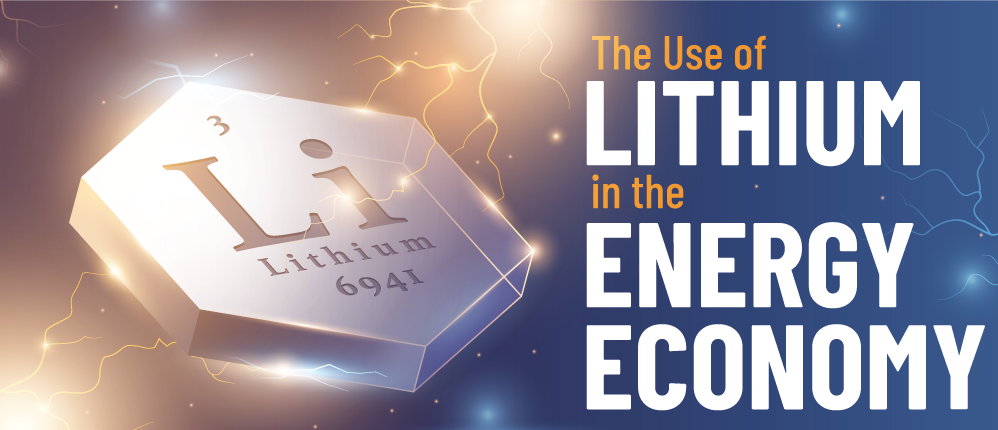Lithium, often referred to as “white gold,” has become an essential mineral in the energy sector, particularly in lithium-ion batteries and electric vehicles. In recent years, demand for this precious mineral has skyrocketed, and its applications in various industries have expanded significantly. In this article, we will delve into the lithium economy, exploring the process of lithium production, its applications, and its global demand.
What is Lithium?
Lithium is a silver-white colored soft metal that is highly flammable and reactive. To prevent corrosion and tarnishing, it is stored in mineral oil. Commercial lithium production involves isolating lithium from a mixture of potassium chloride and lithium chloride through electrolysis. Lithium finds its use in numerous industries, including lubricating greases, glass and ceramics, metallurgy, nuclear fusion applications, and medication for bipolar disorder.
Lithium carbonate equivalent (LCE) is the first chemical in the lithium production chain and is used to calculate lithium production. Direct lithium extraction (DLE) is a modern technology used to extract lithium carbonate or lithium hydroxide from brine flows using absorption, ion-exchange, membrane-separation, or solvent extraction processes followed by a polishing solution. DLE has several benefits, including decreasing production times, increasing recovery from 40% to 80+%, reducing the footprint of evaporation ponds, and lowering the usage of reagents.
Why it is in Demand
Lithium demand is expected to rise from 500,000 metric tons of LCE in 2021 to 3 million to 4 million metric tons in 2030. Chile currently holds the largest lithium reserves at 92 million metric tons, while Australia is the largest producer of lithium in the world. In 2025, the projected global lithium demand is estimated to be 1 million metric tons of LCE, while the forecasted global lithium is 814,000 metric tons of LCE.
The lithium economy has been booming in recent years, and many nations have established themselves as lithium-producing nations, including Argentina, China, Australia, and Chile. Others, such as the United States, Canada, Mexico, Peru, Bolivia, the United Kingdom, Ukraine, Siberia, and Thailand, have recently mapped resources and reserves. According to projections, demand for lithium will increase by 22 times by 2030, highlighting the importance of lithium in the energy economy.
Where Lithium is Found
The United States holds just 3.6% of global lithium reserves, meaning the reliance on the international mining industry is greater than ever. With an increase in demand for lithium, mines specializing in graphite, cobalt, nickel, REEs, manganese, copper, silicon, and chromium have seen a significant increase in demand. To ensure a stable supply chain of lithium, countries must invest in lithium mining operations and focus on developing innovative technologies for extracting lithium from brine sources.
In the energy sector, lithium has become a critical mineral, primarily due to its applications in lithium-ion batteries and electric vehicles. Lithium-ion batteries are the most commonly used rechargeable batteries, and their demand is expected to increase exponentially in the coming years. Electric vehicles are also becoming increasingly popular due to their eco-friendliness and low cost of ownership. These vehicles are powered by lithium-ion batteries, which account for a sizable portion of the vehicle’s weight and cost.
In conclusion, lithium has become an essential mineral in the energy economy, with its applications expanding to various industries. Its versatility and unique properties make it an ideal candidate for use in electric vehicles, renewable energy storage systems, and mobile devices, among others. As the world transitions to a low-carbon future, lithium will continue to play a vital role in reducing greenhouse gas emissions and combating climate change.
With the projected increase in demand, countries must invest in lithium mining operations and focus on developing new technologies for extracting lithium from brine sources. The reliance on the international mining industry for lithium must be addressed to ensure a stable supply chain for this precious metal. This means that countries with significant reserves of lithium must increase their production capacities to meet the growing demand. Additionally, research and development efforts must be intensified to develop new and more efficient ways of extracting lithium from brine sources, such as improving the efficiency of evaporation ponds or developing modern technologies like nanofiltration.
Conclusion
The lithium economy has a bright future, and it will undoubtedly play a significant role in the transition to a more sustainable and low-carbon future. However, this transition must be accompanied by responsible mining practices and a commitment to addressing the environmental and social impacts of lithium extraction. By investing in sustainable mining practices and collaborating with local communities, the world can ensure that the lithium economy continues to thrive while minimizing its negative impact on the environment and society.

Source: LithiumStockTips.com








